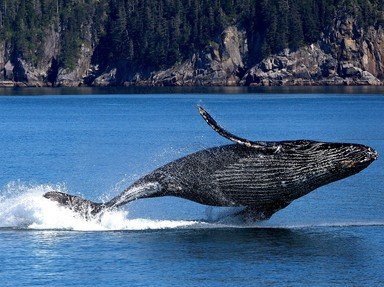
The Size of Whales Trivia Quiz
The word cetacea derives from the Latin for huge fish. From the list of whales and dolphins can you establish the correct order from largest to smallest?
An ordering quiz
by Snowman.
Estimated time: 3 mins.

| What's the Correct Order? | Choices |
| 1. (Largest animal in existence. Possibly ever.) | Blue whale |
| 2. (Fastest of the whales. Previously known as a herring whale) | Dwarf sperm whale |
| 3. (Have a large broad back and no dorsal fin) | Beluga whale |
| 4. (Bubble-net feeders known for their song and their aerial acrobatics) | Killer whale (Orca) |
| 5. (North Pacific "devil fish". Almost hunted to extinction.) | North Atlantic right whale |
| 6. (Has a V-shaped body. Named for a Norwegian whale spotter.) | Gray whale |
| 7. (Black with white markings. A dolphin not a whale.) | Common minke whale |
| 8. (Also known as the white whale. Mainly lives in the Arctic.) | Humpback whale |
| 9. (The smallest of the whale species) | Fin whale |
| 10. (Black/grey with white markings. A dolphin not a whale.) | Pygmy killer whale |